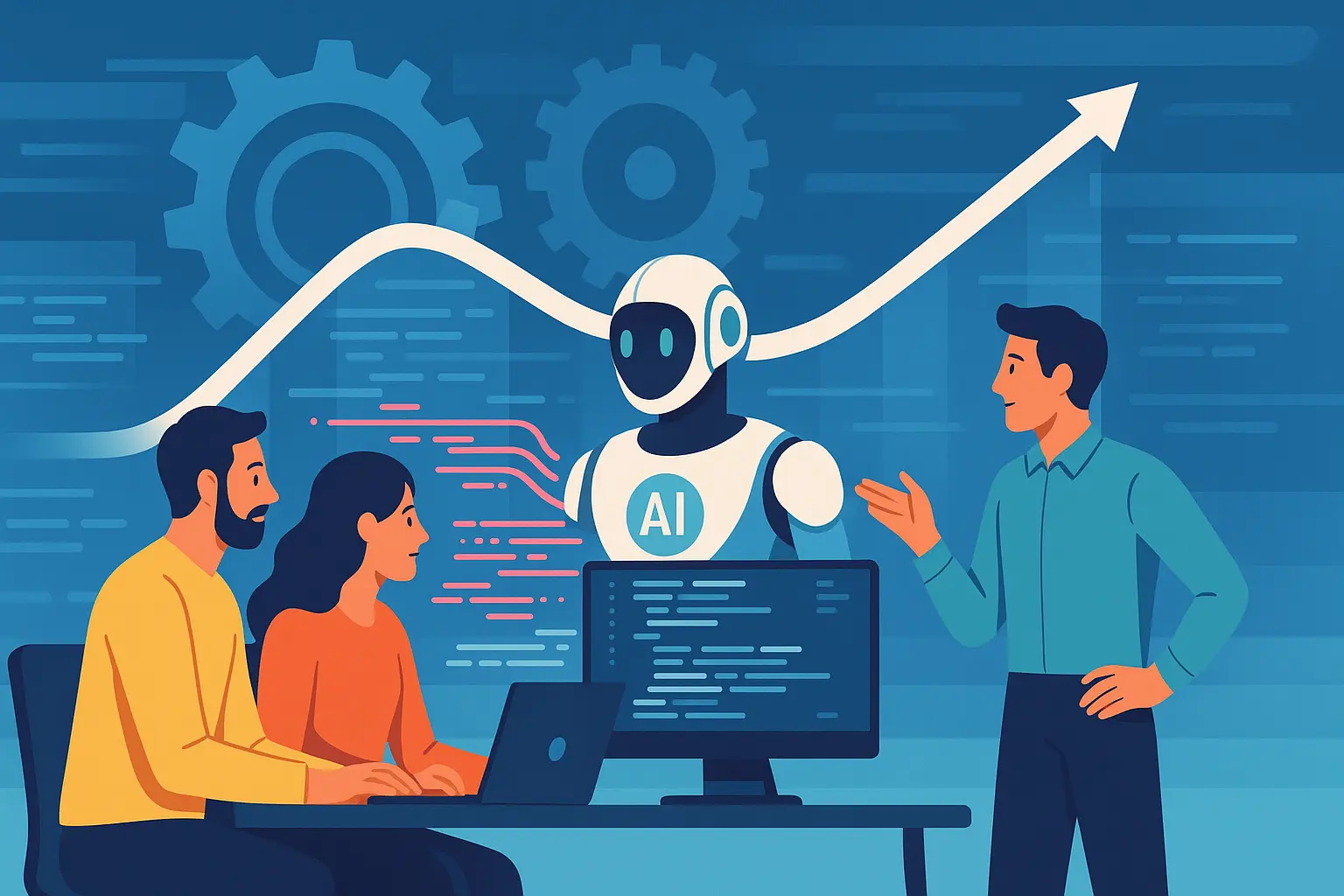Post: How AI Helps Teams Develop Faster (Without Losing the Human Touch)

If you’ve ever waited on a slow build, chased a flaky test, or spent an afternoon hunting for a missing semicolon, you know: software development is a game of time. AI doesn’t replace developers—it unblocks them. Think of it as a calm, tireless pair-programmer that handles the busywork, surfaces context you forgot, and lets you ship with confidence.
Where AI Actually Saves Time
1) Planning with context
AI can turn a product brief, issue thread, and a couple of screenshots into a reasonable draft plan—user stories, acceptance criteria, and risks. You still review and refine, but the blank page is gone.
2) Code generation & refactors
From scaffolding modules and writing boilerplate to proposing refactors, AI speeds up the parts of coding that are repetitive. You keep architectural control; AI accelerates the execution.
3) Instant documentation
AI can summarize a complex PR into a clear changelog, produce inline docs, or turn a meeting transcript into action items. Fewer “what does this do?” moments.
4) Tests that write themselves
Unit tests, integration tests, and even synthetic data can be drafted by AI, improving coverage quickly. You focus on the tricky edge cases and behavior.
Paste a stack trace and logs; get hypotheses, likely root causes, and commands to verify. It’s not magic—but it’s a fast second brain that narrows the search.
6) DevOps automation
CI/CD config, IaC snippets, runbook steps, and post-incident summaries can be generated or validated by AI. Less yak-shaving, more shipping.
Keeping the Human Touch
- Humans own decisions. Let AI draft; people decide.
- Use “explain-first” prompts. Ask AI to explain its changes in plain language so reviewers build trust quickly.
- Bias toward clarity. Prefer smaller, well-commented diffs over giant AI mega-commits.
- Pair with AI, not against it. Treat it like a junior teammate: great at speed, needs guidance and review.
A Lightweight AI-Assisted Workflow You Can Try
- Kickoff: Paste the ticket and code context; ask for a checklist and risks.
- Scaffold: Generate the first pass (types, interfaces, routes, tests).
- Iterate: Implement the core logic yourself; use AI for edge cases and refactors.
- Tests: Ask AI to expand coverage and generate fixtures.
- Polish: Use AI to write docs, PR summary, and release notes.
- Afterward: Request a short retrospective of what to automate next time.
Practical Guardrails
- Always review generated code. Treat AI output like code from a new teammate.
- Keep secrets out of prompts. Use redaction or safe sandboxes.
- Pin versions & lint. Let your toolchain catch regressions early.
- Measure impact. Track lead time, PR cycle time, and defect rate to prove the speedup.
What “Faster” Looks Like in Practice
Teams report fewer context-switches, shorter PRs, and higher test coverage. Most of the win isn’t raw typing speed—it’s fewer stalls. When reviews are clearer, tests are easier to write, and CI is less brittle, features simply flow.
Popular Generative AI Tools to Explore
Here are some widely used tools across text, code, design, and video that can help you boost productivity:
Text & General Purpose
- ChatGPT – conversational AI for writing, coding, brainstorming, and more
- Claude AI – excels at analyzing long documents and providing structured responses.
- Jasper – tailored for marketing, blog posts, and ad copy generation.
Code & Developer Support
- GitHub Copilot – integrates with IDEs to suggest code, refactors, and tests.
- Microsoft Copilot – broader AI assistant inside Microsoft 365 and dev tools.
Images & Visuals
- Midjourney – powerful text-to-image tool for creative and artistic visuals.
- DALL·E 3 – OpenAI’s image generator, great for illustrations and design assets.
- Stable Diffusion – open-source framework for flexible, customizable image generation.
Video & Multimedia
Ready to Try It?
Start small: one squad, one project, one clear metric. Use AI where work is repetitive, keep humans in the loop, and iterate. Speed isn’t about rushing—it’s about removing friction.

